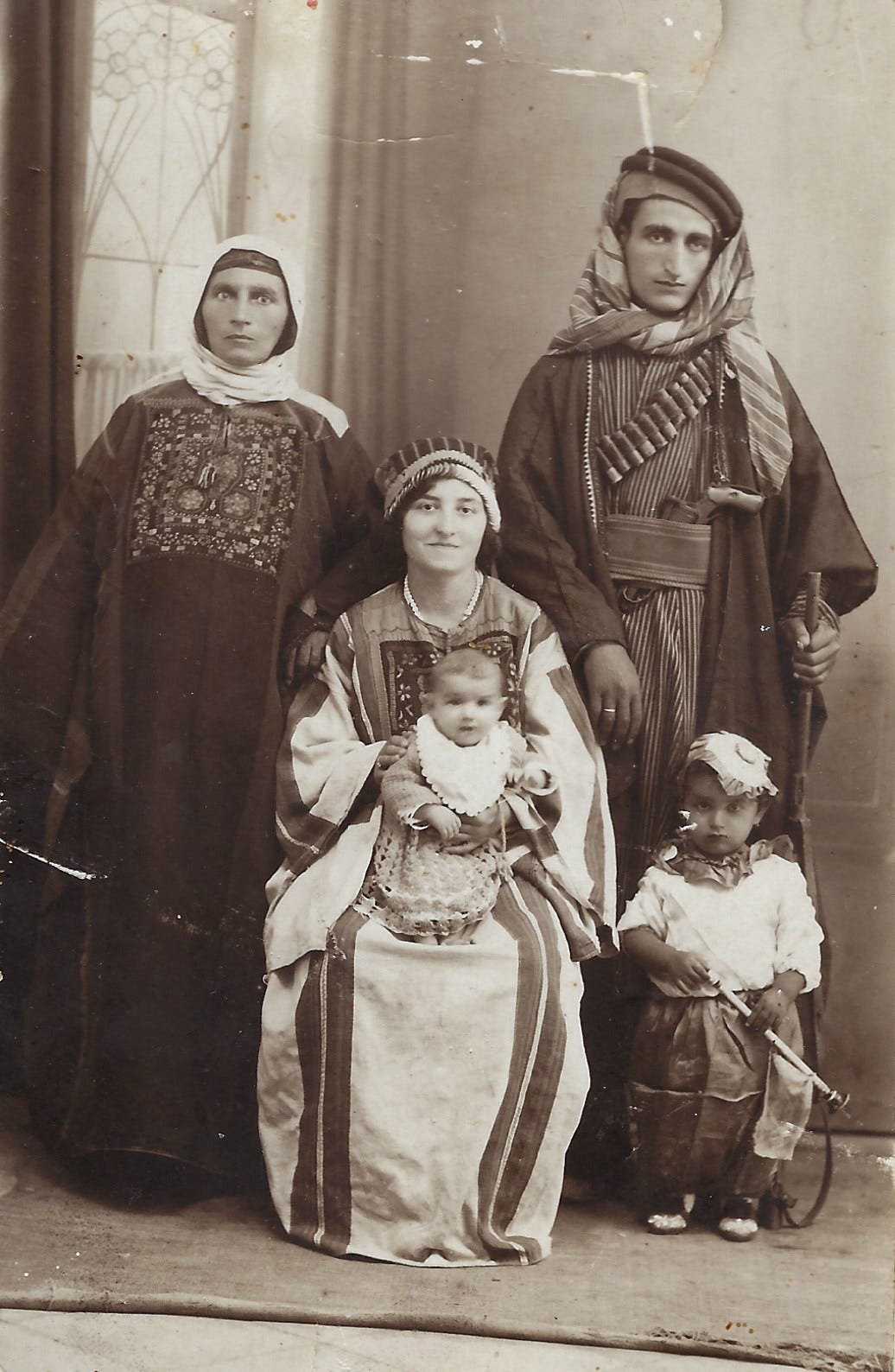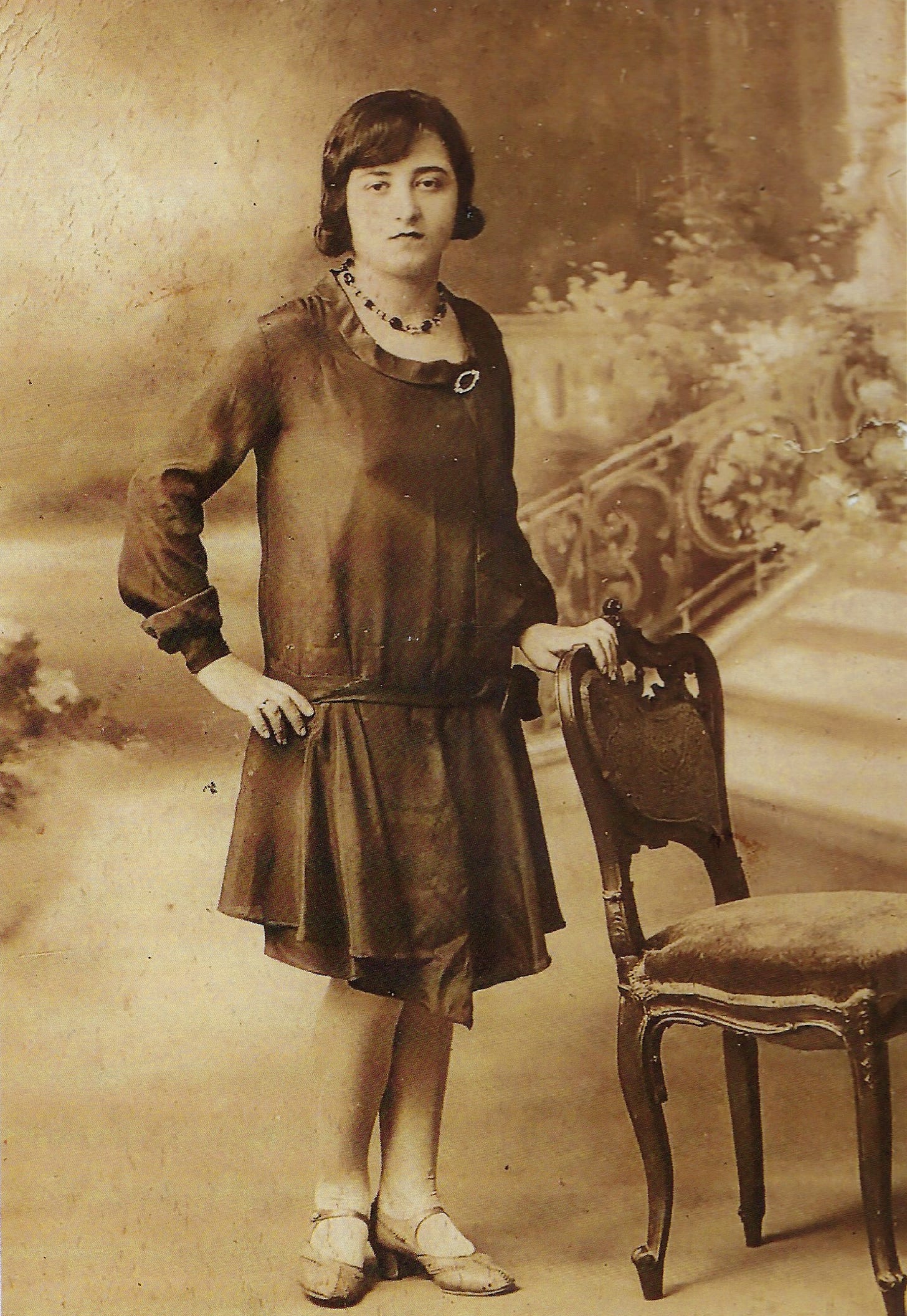The Shattered Window into the Past
Speaking to my grandfather opened up the world of a forgotten Middle Eastern Jew, empowering me to challenge dominant narratives and imagine a different future
Boaz Israel Levy researches the history and international relations of the modern Mashriq. He blends Middle East studies, Jewish studies, and political science to challenge the dominant frameworks for understanding the region. He aims to demarginalize the Middle East in public life by building connections between scholarship, activism, and policy.

Armed with a notebook and pen, I stepped into an antique Holon home to interview my Sephardi saba. It was 2021, and I was desperate to understand my family history after losing my Ashkenazi grandfather.
“My parents spoke Kurdish,” he said as I handed him a bourekas turki as an offering. I hoped this more nostalgic, spiraled form of bourekas would get his memories flowing.
“What were their names?” I asked, rifling through his documents in the salon. Here, every Saturday morning, my father and his family would dig into the tray of miniature bourekasim “Zimbul,” my great grandmother, baked from scratch. The Turkishness of her name, as well as her cooking, stood out to me. My grandfather quickly assured me she also went by the Hebrew “Zelda.” I pointed at his birth certificate, issued in Mandatory Palestine, which documented his parents as Persian, not Turkish.
“But I thought they came from Istanbul,” I said. “And didn’t you say something about Tbilisi?”
Confused by his apparent Kurdish-Georgian-Persian-Turkish genealogy, I spent the scorching afternoon probing the widower in a mixture of Hebrew, Ladino, and English. He sat across from me patiently, wiping sweat off of his bald head and folding his arms onto his A-shirt. In his 80s, he only wore a button-down for bar mitzvahs and weddings. The bourekas turki had not buttered him up.
A man of very few words, the interview was more of an interrogation. According to saba, my grandmother’s family left Damascus for Tel Aviv in the 1930s. She’d later meet my grandfather, whose family came from Istanbul. Born in Palestine, they’d be married in Israel. Though my great grandparents spoke Arabic, Turkish, Kurdish, and Ladino, my father only learned Hebrew. The interview helped me build a family tree, presenting me with enough of a history as I needed. But it spawned greater questions, pushing me towards a Middle Eastern Jew I didn’t even know I had lost.
Like many raised by Israeli parents, I adopted the narrative that my grandparents’ families were treated like second-class citizens, victims of the dhimmitude of the Islamic world. But my grandfather’s interview signaled a vast abyss between the multicultural, multilingual Middle East of the past and the Middle East I knew as an Israeli. Scholarship and activism are critical to identifying, mitigating, and closing that gap. The stakes are especially high today, when the occupation continues to ensnare Palestinians and Israelis in asymmetric cycles of violence and death.
The Zionist narrative surrounding pre-state Middle Eastern Jews depicts a barbaric Middle East whose antithesis is the democratic state of Israel. But other narratives are just as disparaging, viewing Middle Eastern Jews as naive or traitorous victims of Zionism whose idyllic multireligious paradise was destroyed as they became subjugated by Israeli state racism. Neither of these narratives attribute agency to Middle Eastern Jews. They are never perpetrators of colonialism or leaders of resistance, but victims helpless to the whims of Muslim society or European imperialism. They either lived in an ideal society which was destroyed by Israel, or suffered under ruthless Islamic rule before Israeli liberation. The implications of these narratives about Middle Eastern Jews are relevant to the ways we view the nature of the Middle East, Zionism, Palestinian resistance, and the future of the land between the river and the sea.
According to the interdisciplinary scholar Lital Levy, the gap between Palestine and Israel, between Arab Jews and Sephardic-Mizrahi Jews, lies in the fact that “it was not only the land that was partitioned, but the past.” Peering into the partitioned window of the past, we stumble upon stories of Middle Eastern Jews in a late Ottoman Empire. Their lives refuse to fit into simplistic narratives, instead calling upon us to remember a forgotten Middle East.
To see into the window of the Middle Eastern past, we need to reconstruct the window frame by remembering the Ottoman world which contextualized the region for centuries. In Istanbul, my grandfather’s family lived in the core of the Ottoman Empire and bore witness to dramatic political changes. The Tanzimat reforms granted equality to all Ottoman subjects, organizing non-Muslims into religious political units called millets. My grandfather’s family could now view themselves as part of a larger Jewish community, just as connected to the Ashkenazi Zionists in Palestine as they were to their Sephardi synagogue in Istanbul. But my grandfather’s family wouldn’t make aliyah until the 1930s, possibly because Zionism was still a fringe movement until the fall of the Ottoman Empire.
Committed to the new ideals of the 1908 Young Turk Revolution, the Jews of Istanbul were able to reject emerging forms of nationalism, including Zionism. Even in these early days, many understood Zionism as a colonial ideology with destructive ramifications. In 1909, the Istanbulite journalist David Fresco warned Ottoman Jews: “that which Zionism demands of you is in no way compatible with what your religion or your conscience asks of you.” Even before the Balfour Declaration, the dangerous effect Zionism could have on Jewish-Muslim relations was clear to Fresco, who asked if Ottoman Jews could imagine “the disaster that will befall the Jews in this country if […] our Muslim compatriots […] become convinced that the Ottoman Jew […] dreams of the creation of [an independent] Jewish state.” After 1918, without an Ottoman Empire to remain loyal to, Turkish Jews including my grandfather’s family could more easily envision a new life in Palestine. But in the heady days of the 1908 Revolution, that future was far from obvious.
In Damascus my grandmother’s family likely celebrated the revolution as well, but with very different ambitions in mind. In the late 19th century, the Nahda or “Awakening” spread across the Mashriq, or “Arab East.” Arab culture, political thought, and literature were renewed, eventually contributing to the emergence of Arab nationalism. Ottoman tyranny and British duplicity during World War I pushed the Arab peoples to revolt. But in the early 1900s, many Arabs–including Jews–pictured their future within the Ottoman Empire. A century ago, it wasn’t a contradiction for Jews to be committed to an Arab cultural project, itself committed to an Ottoman world.
Most memories of my grandmother consist of eating her homemade kibbe. The Arab combination of bulgur, baharat, and lamb was thrilling to a child with an American palate. Her kinky hair was dyed red, shaped into a curly pixie cut. She’d puff on a cigarette, repeating, “shtuyot,” in her raspy voice. “Shtuyot” was her motto, reserved for bickering, family drama, and the newspaper.
I wonder if her family also invoked “shtuyot” when reading the periodicals of their times, often packed with debates on European imperialism, Zionism, and Arab culture. The events of the 1920s certainly had a role in convincing them to make aliyah, despite the protests of Arab Jewish intellectuals. Leaving Syria and settling Palestine was unimaginable in the 1910s when Jewish Lebanese feminist Esther Azhari Moyal called for Ottoman Syrians to “establish an Eastern Arab civilization.” Abandoning Arabic for Hebrew was unthinkable when Sephardi journalist Nissim Malul warned the Yishuv would become an “isolated nation, separated from all other peoples living under Ottoman rule” unless it studied Arabic and its literature.

In the 1910s, the Zionism my grandmother’s family would eventually plug into was still unacceptable to most. The Arab Jews who even considered Zionism simply didn’t believe in separating Palestine from the Ottoman and Arab worlds. Their Zionism fit into Ottoman and Arab intellectual traditions. But the 1920s changed everything. How could my grandmother’s family care about being an “isolated nation” after the Middle East was dismembered by Europe and confined into mandates? How could they find inspiration in Arab culture after Zionism’s encroachment led to riot after riot endangering Arab Jewish lives? The Tanzimat, Young Turk Revolution, and Nahda had awakened Jews to new visions for the Middle East. World War I, European imperialism, and Zionism had foreclosed those futures.
It’s easy to feel nostalgic for the world through that window. Looking in, I see my ancestors as both Jewish and Arab, reading both Zionist papers and Arabic literature, and traveling unimpeded across the now-militarized borders surrounding Palestine. But that world I’m imagining isn’t a window. By reflecting my present onto the past, I’ve turned it into a mirror. The window of the past Middle East was never idyllic, always marred by scratches, scuffs, and cracks. But the partition did shatter it, scattering its glass pieces across a vast floor. There are shards which reveal curious strains of Zionism which promised Ottoman loyalty. There are shards which exhibit the deep connections between Middle Eastern Jews and their Arab communities. There are shards of betrayal from non-Jewish neighbors just as there are shards of complicity in the ethnic cleansing of Palestine. Narratives, histories, and family interviews cannot recover these shards, and so they can’t be used to rebuild the past or mirror ourselves onto it. Instead, we must have the same ambition Middle Eastern Jews had over a century ago to envision a different future for the land between the river and the sea despite the apparent contradictions. We can only begin by abandoning attempts to recover something whole, embracing the scattered shards and the possibilities they represent. ⛺️





